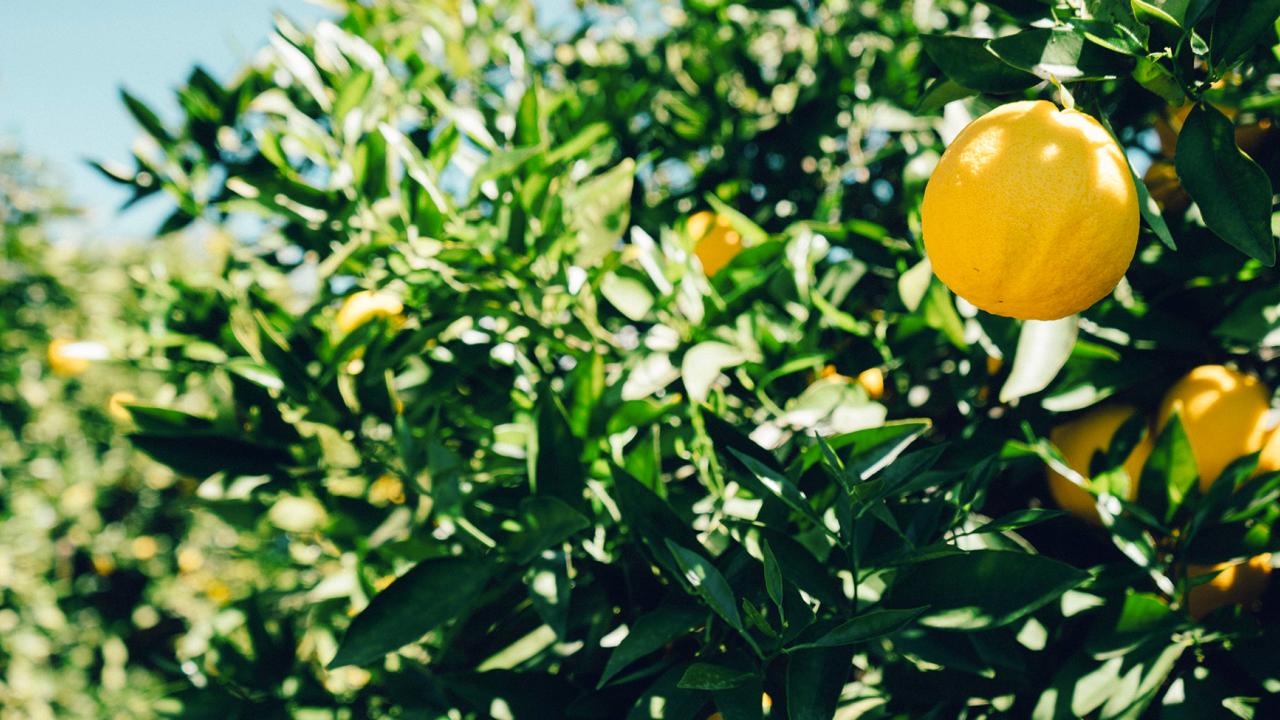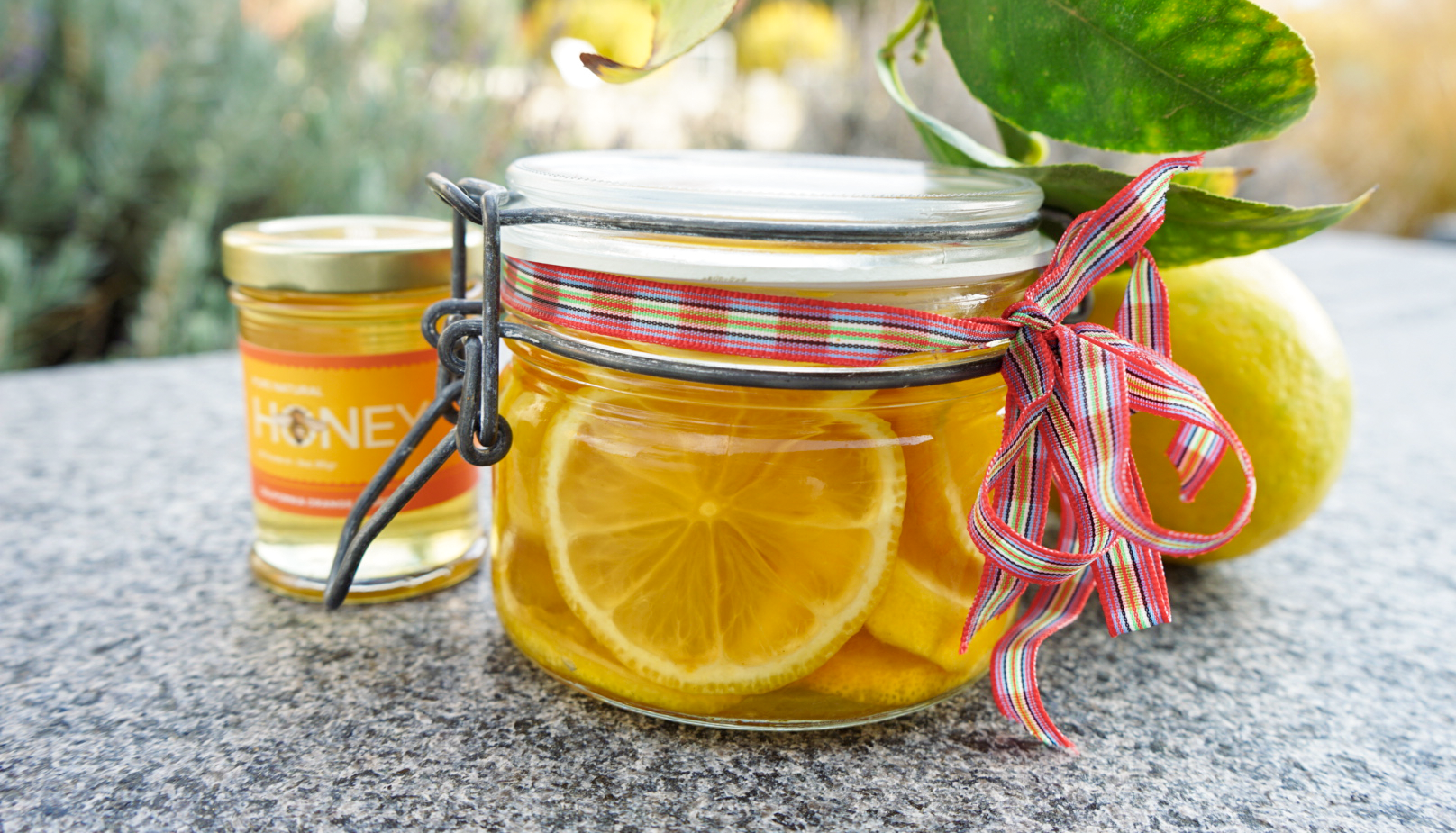
Lemons: A Harvest for Now and the Future
The Honey and Pollination Center is located in the Robert Mondavi Institute on the University of California, Davis campus. A group of buildings housing the departments of Viticulture and Enology and Food Science and Technology and all their related labs and offices surround the centerpiece: The Good Life Garden.
Over the last several years, the Garden has been replanted and come under the supervision of the UC Davis Arboretum and Public Garden. Trees, shrubs and herbs provide forage for the many pollinators that visit. Students work edible gardens to help sustain those who are food insecure. Tables and benches in the sycamore grove allow professors to offer their classes outside. The garden, simply, is a haven within the university.
Among the fruiting trees, you can see pomegranates, oranges, nectarines, and figs. The most prolific of all of these is the Meyer lemons. This hard-to-find (outside of California) variety is distinct from the standard Eureka found in most supermarkets. The Eureka has a thick, bitter pith with a lively zest and tangy juice. The Meyer has a thin orange-yellow peel, not easily zested, and the juice is sweeter and much more aromatic than its cousin.
One of the amazing things about lemon trees is that all three stages of growth are on the bough at the same time, often with beautiful and aromatic flowers. You will be picking a large, firm lemon and notice that some are green and some are tiny and pink.
Lemon and honey is a classic and fantastic combination. Turn your abundance into something you can use all year. Lemons can be picked in the late winter, infused into honey, and used in the summer for iced tea.

Recipe: Lemon Infused Honey
Download the printable recipe: here
What you need:
- A pint jar and lid
- 3-4 lemons (either Meyers or Eureka – just make sure they are the same)
- 1 cup UCD Orange Blossom Honey
Directions
- Wash the jar and the lemons.
- With a sharp knife, thinly slice the lemons discarding the pithy end cuts. Remove as many seeds as you can.
- Pour a small amount of the honey into the bottom of the jar and begin layering in slices of lemon and honey. You may need to cut slices in half or wedge them down the sides.
- Once the jar is filled to the top, screw on the lid and wait a day. The lemons might float to the top and you can add more slices to the jar.
- Store the jar in the refrigerator. The juice of the lemon mixes naturally with the honey and a fruity, lemony syrup begins to form. Within a month, the peel softens and becomes almost like candy. Store refrigerated up to a year
Use ideas:
- Add it to hot tea along with a bit of the fruit and peel, flavoring the tea even more richly.
- Pour over cereal, pancakes or waffles.
- Try it on vanilla ice cream.
- Make ice tea
- As warm weather comes around, add the infusion to your favorite iced tea. Let about 4 tea bags steep in a quart of water in the warm summer sun. (Earl Grey offers a hint of bergamot, a type of citrus, in the tea itself or a spicy blend.) Once warm, pour in half a cup of infused syrup. Pour over ice and garnish each glass of tea with a sprig of mint and a lemon slice from the jar.
